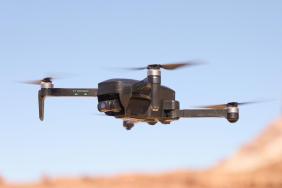Maybe you’ve heard this one before. A drone launches in San Francisco, flies a standard route, and lands. Nothing to see here. Right? Wrong. The very same drone was controlled and maneuvered by tech geniuses using a cloud-based program in Paris. How does that work exactly? According to the minds at French tech firm Uavia, piloting drones remotely anywhere in the world is not a thing of the future. It’s a thing of the present. They’ve even gone so far as to call what they do “the internet of drones.”
Imagine a drone is connected via wifi from a San Francisco hotel. Then it’s fitted with a First Person View camera. And finally it is synced with a Paris office from whence it’s piloted and controlled via the cloud. Got all that? You’ve imagined the nuts and bolts of Uavia. The firm piloted the drone with more than 9000 km and 9 hours time difference separating the team of tech gurus from the drone itself. But neither distance nor logistics could hinder them from achieving what would ordinarily seem unthinkable.

Cloud-controlled drone. Photo courtesy of Uavia.
Despite what could have been a dodgy hotel wifi connection and any number of regulatory nightmares, Uavia embarked upon an ambitious project to pilot a drone remotely from Paris…in Silicon Valley. March was the setting off point for a rather large scale collaboration that was part of an even larger tech workshop that eventually saw dialogue with the likes of Facebook and Google geniuses as well.
But the small, intimate crew of French designers was unphased by any pressure to live up to expectations when so many heavies were in the audience. If anything, the guys from Evry (just outside of Paris) performed with flying colors (pun fully intended). The success of the flight was followed by participation in a seminar at Stanford University and several meetings and consultations with local American startups.

Photo courtesy of Uavia
Uavia hopes to put the technology to further test in the months ahead. But for the moment it has already fine tuned a synergy of elements that include strategically placed charging stations for the drones themselves, high definition video synchronized with the HQ offices, and cloud-based technology wherein to control everything from lift off to landing.
“For drones to become mainstream, we need more of them to become autonomous and we need to facilitate their maintenance.” Says VP Maarten Ectors.
But even with this first huge step towards more widespread autonomous drones, there still looms the question of legal ramifications. Drones must be registered and even then only drones of a certain size for the moment . That leaves the door open to enterprises like Amazon and other businesses to swoop in and capitalize on the future marketplace as navigated by drones. But anything bigger than the smallish crafts we currently see trial testing the friendly skies seems a long way off.






